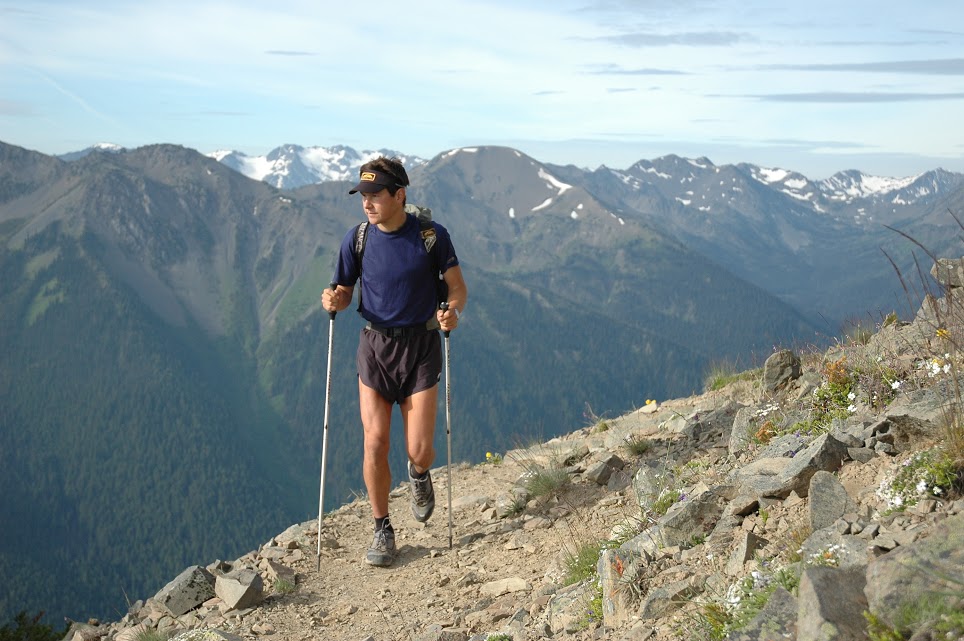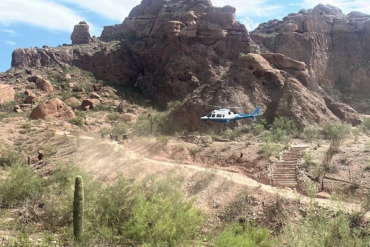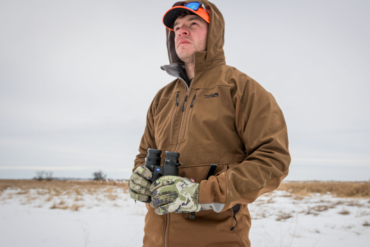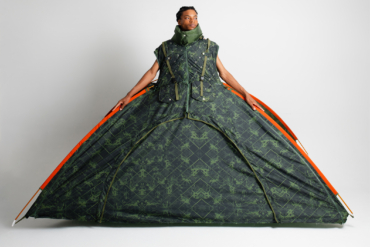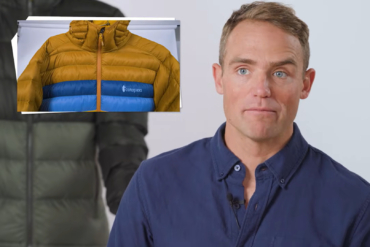While it may be often overlooked, what you wear hiking can make or break the experience. Here, we outline what clothes to wear hiking and how to choose hiking apparel depending on the hike and conditions you may face.
Knowing what to wear hiking can seem like a really general topic. So, to help you navigate the overwhelming number of clothing options on the market, we will highlight the importance of knowing a few key factors:
- Your ability level
- The weather
- Having proper supplies (without going overboard)
- Trail conditions/route
You need to research all these before heading out. They will impact what you wear hiking.
Download Printable ChecklistWith so many important factors playing into deciding what to wear hiking, be hyperaware of the clothing materials. Before we dive into the nitty-gritty, remember two things: no cotton and no denim.
Hiking Footwear
Hiking Shoes
Footwear is the article of clothing that provides the most support and offers protection from rocks, roots, and loose debris along the trail.
Finding the perfect pair of hiking shoes may take some trial and error. But knowing the type of terrain you’re heading into, weather conditions, and the amount of incline or decline can help you decide specific footwear for the hike.
If hiking at high altitudes, make sure to have a boot with ankle support. Here’s a link to help you find the best boots to hike in and why. Additionally, if you’re aware that a stream crossing or heavy rain is in the forecast, look for GORE-TEX when shopping for footwear.
I would recommend going into an outdoor store such as REI to try on a series of hiking boots and shoes. Everyone’s foot shape is different, so trying on hiking shoes gives you a chance to see what’s most comfortable.
Hiking Sandals
Depending on the weather conditions and climate, hiking sandals are another good option. Most hiking sandals are also light enough to throw in your backpack so you can swap them out as camp shoes on an overnight hike or use if a river crossing pops up.
The biggest cons of hiking sandals are less ankle support and less protection from things like rocks. However, they do allow for much better breathability for those hot summer hikes. They’re great for stream crossings, going for a dip in a lake where the waterbed is rocky, and hiking through wide-open dirt trails.
If you do hike in sandals, be very aware of your surroundings. It’s easy to clip your foot on something and get a cut. Also, don’t forget to apply some sunscreen to your feet. They can get sunburned too, and if this happens, wearing any other pair of shoes will be uncomfortable for a few days.
Two of the most popular brands for hiking sandals are Chaco (much heavier due to the rubber) and Teva (much lighter).
Clothing to Wear Hiking
Tanks, Tees, Long-Sleeve Tops
Depending on the weather conditions, you should have at least two shirts with you, especially if you’re out for a long day or overnight hike. But a short day hike with clear weather may not require additional clothing.
A dry T-shirt or long-sleeve shirt is ultra-lightweight and will help protect you from the sun. You also want to have good breathability through the fabric and a loose fit. If you head out with a tank top, always have an extra top with you. A tank top exposes your shoulders, so you can quickly get a sunburn.
Ultra-lightweight collared hiking shirts that look like fishing tops work especially well. You can pop the collar to protect from the sun, and they dry super fast if you get them wet. Having a lightweight, moisture-wicking tank underneath gives you versatility and function while outdoors.
Long-sleeve wicking tops don’t always mean warm, though. They are ultralight and breathable, which is an excellent addition for hikers.
Some of the top brands selling these shirts include Columbia, Mountain Hardwear, and Orvis.
Merino Wool Socks
Going thicker or thinner based on the weather is the key to happy feet when hiking.
Having socks taller than your hiking footwear is also a necessity. Without it, your ankles may rub, get irritated, and even start to bleed or blister. Most hiking socks now come with a rating of thin, medium, or thick hiking standards.
Smartwool and Darn Tough are the brands to look for when shopping for hiking socks. You should plan to pack one extra dry pair in case you slip in a creek or your feet start to blister.
Gloves
Insulated and waterproof gloves are best for wintry conditions, and mittens are always warmer than gloves made of the same materials. Your extremities are the parts that will keep in the heat, so remember that when keeping your fingers, toes, and noggin warm!
Hiking Pants

Hiking pants are a pretty loaded topic. Everyone has their idea of which pants are best for them, especially when hiking. The main thing to remember is that comfort is key. Keep in mind that you’ll be wearing them when going down trails with turns, inclines, and declines.
Hiking pants come in a multitude of thicknesses, so finding a pair you love based on fit and comfort is the first step. From there, find hiking pants that won’t restrict in hot weather and still provide warmth in cold weather.
Some top outdoor brands for finding the best pair of hiking pants include Patagonia, Columbia, Mountain Hardwear, and The North Face. Check out our review of the best hiking pants for men here, and the best hiking pants for women here.
Hiking Shorts, Skirts, and Skorts
Shorts, skirts, and skorts have their pros and cons. Regardless, if you hit the trail with exposed legs, make sure to have checked the weather. Even if it says clear skies and sun, be sure to bring along a thin base layer/pant just in case.
Wearing shorts means there are some added variables such as sun exposure, bugs, and trail conditions. With your legs exposed, your skin is more at risk.
Walking through the woods, you can always encounter something that will scratch or irritate the skin, and some people are more susceptible than others. So wearing shorts is a personal choice. If you’re hiking through an unfamiliar area, wearing shorts may not be the best option.
On short hikes in fair weather, shorts are a great option. Shorts, skirts, and skorts made for hiking or outdoor sports usually come in quick-drying or wicking materials that keep the legs freely ventilated. This also makes them great for a spontaneous swim or if a hike takes you to an unexpected river crossing.
Ideal brands for finding high-quality hiking shorts, skirts, and skorts are Columbia, Outdoor Research, and Patagonia.
Top Layer
When choosing a top layer, look for extra insulation. This insulating layer can come in a variety of top layer options.
Fleece jackets are made out of polyester materials. The functionality of their soft, thick fibers is warm and insulating, which makes them a perfect layering option.
Jackets and puffies are made from synthetics, often combined with special coatings or laminates that protect against rain and wind. Check out our article on outer layers to help guide you to the best option.
Another excellent insulator is a vest. Vests used to be pretty “nerdy” looking, but they’ve come a long way. Hiking vests can insulate and keep you warm as well as act as a barrier for wet conditions.
If you’re on a cold-weather hike, pack or wear a base layer (top and bottom). Base layers are generally lighter weight and are rated as thin, medium, or thick. Base layers are surprisingly warm and can hold in a lot of heat despite their meager weight.
Windbreaker
A windbreaker can be a hardshell jacket or even a rain jacket. However, rain jackets tend not to be as breathable as designed windbreaker jackets.
With so many brands now making windbreaker tops and zip-ups, it’s a great addition to your “what to wear hiking” list! Windbreakers do what their name says: They break the wind.
Windbreakers are especially great for when you’re hiking on the top of a ridgeline or paddling on the river or lake. Additionally, these are great to wear if it’s sunny out, as they block the sun from your arms, breathe well, and are lightweight.
Patagonia and Outdoor Research make excellent windbreaker tops to add to your collection.
Undergarments
It may seem strange to specify the type of underwear that is appropriate for hiking, but it can make a big difference. If you’re wearing cotton underwear, it will hold onto your sweat as you’re going, and in some cases can cause chafing.
You will want something with good support, and something to prevent chafing. Seamless underwear designs are a good option for hiking for those two reasons. Silk blends and polyester blends usually do the trick for comfort, support, and breathability.
REI has a great variety of undergarments that will suit your needs.
Sports Bra
OK, ladies, don’t hit the wilderness in your everyday bra. If you do, you will be uncomfortable and feel restrained. Regardless of your bra size, sports bras have stepped up their game in the past 10 years and have given us the support we need.
Some are standard pull-on with stretch, and some now have snaps, buckles, and even underwire support for the bustier of the bunch. Additionally, most sports bras are made of fast-drying fabrics and are machine washable.
Check out our review of the best sports bras here.
Other Wearable Hiking Accessories
Remember that you can always modify your clothing options based on weather and temperature. To that end, a beanie hat and Buff are two excellent accessories to help keep you warm in chilly weather.
For those hot and clear days, a baseball cap combined with sunglasses — remember to opt for polarized lenses — will provide great protection from the sun.
Rain Gear

Rain Jacket & Pants
Keeping dry is the goal for avoiding misery on the trail and, in some cases, preventing hypothermia. Packing gear that offers waterproof and breathable protection is the best way to do this. Added breathability comes from venting zippers in your armpits and sides of jackets.
With changing conditions and temperatures, make sure you’re dry but also insulated for those colder days. On dry, windy days, you can also wear hardshell outerwear (rain gear) as protection from windchill.
Rain pants can be a welcome clothing item when hiking in the rain, but they’re not always necessary. They often come with zip-off features, which facilitates breathability and is super handy for getting them on and off.
Great brands for rain gear are Arc’teryx, Outdoor Research, Mammut, and Marmot.
Rain Poncho
While rain ponchos may not be “fashion-forward,” they make up for it in functionality and practicality.
They’re much lighter than a rain jacket, pack up smaller, and cover both you and your giant backpack. Ponchos have come a long way from the thin plastic “hefty sacks” that we once threw over our clothing in a downpour.
Some of the top ponchos we recommend are Rumpl, and Therm-a-Rest.
Extra Gear
Consider adding optional extras such as a swimsuit, a towel, and gaiters depending on your destination and expected weather.
How to Choose What to Wear Hiking
With high-tech clothing engineering these days, you’re sure to find everything you need. Trust us, the right hiking clothes will ensure that you have a fun, comfortable, and unforgettable hiking adventure!
If you’re looking to get out on the trail for a long adventure, you’ll need to move beyond what to wear while hiking. We recommend adding our backpacking checklist to your research and planning.
Melissa Chiella is a New York native but left the busy streets and her legal career 11 years ago to follow different dreams. She’s since been exploring the globe while pursuing a new career in front- and back-country wilderness guiding and was lead trainer and GM for an outdoor travel brand.
Melissa now calls the West Coast home, splitting her time between Lake Tahoe and Alaska. With many years of travel experience, hiking adventures, cultural exposure, and professional guiding, she looks forward to sharing her colorful experiences through her writing.



